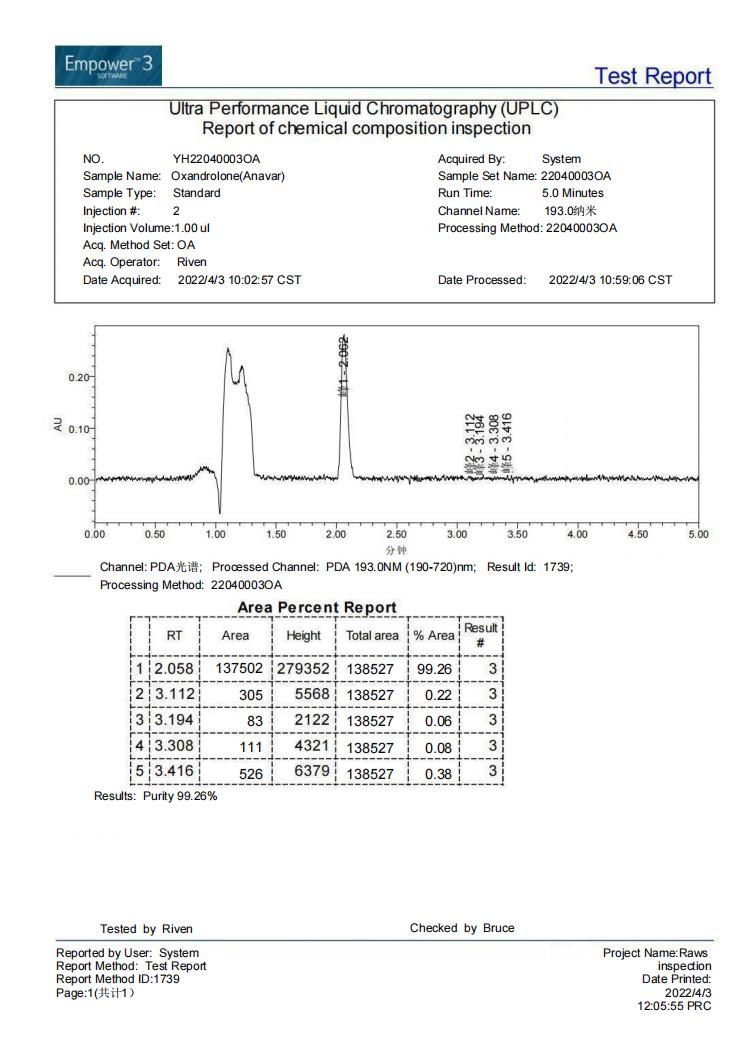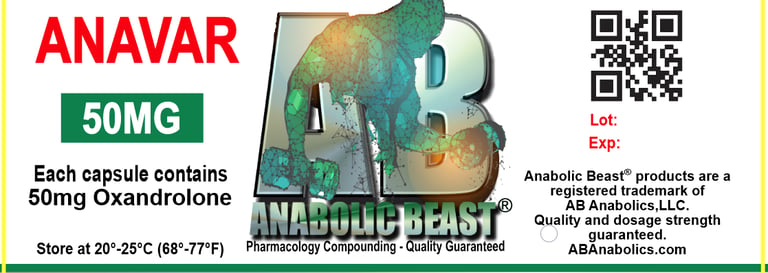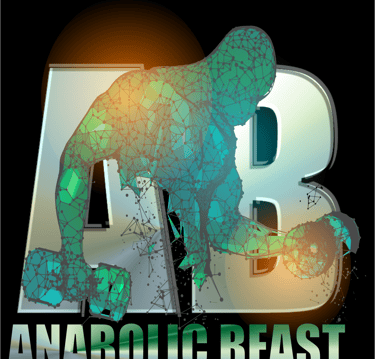Current stock purity 99.26% tested on 2022/04/03
Currently produced in 10mg, 20mg and 50mg Capsules. Quantity per container will vary per distributor.
Oxandrolone, sold under the brand names Oxandrin and Anavar, among others, is an androgen and anabolic steroid (AAS) medication which is used to help promote weight gain in various situations, to help offset protein catabolism caused by long-term corticosteroid therapy, to support recovery from severe burns, to treat bone pain associated with osteoporosis, to aid in the development of girls with Turner syndrome, and for other indications. It is taken by mouth.
Side effects of oxandrolone include symptoms of masculinization such as acne, increased hair growth, voice changes, and increased sexual desire.[4] The drug is a synthetic androgen and anabolic steroid, hence is an agonist of the androgen receptor (AR), the biological target of androgens such as testosterone and dihydrotestosterone. It has strong anabolic effects and weak androgenic effects, which give it a mild side effect profile and make it especially suitable for use in women.
Oxandrolone was first described in 1962 and was introduced for medical use in 1964. It is used mostly in the United States. In addition to its medical use, oxandrolone is used to improve physique and performance. The drug is a controlled substance in many countries, so nonmedical use is generally illicit.
Many bodybuilders and athletes use oxandrolone for its muscle-building effects. It is much more anabolic than androgenic, so women and those seeking less intense steroid regimens use it particularly often. Many also value oxandrolone's low hepatotoxicity relative to most other orally active AAS.
Powerlifters have also been known to take oxandrolone, due to its ability to significantly increase muscular strength
Women who are administered oxandrolone may experience virilization, irreversible development of masculine features such as voice deepening, hirsutism, menstruation abnormalities, male-pattern hair loss, and clitoral enlargement. Oxandrolone may disrupt growth in children, reducing their adult height. Because of these side effects, doses given to women and children are minimized and people are usually monitored for virilization and growth abnormalities. Like other androgens, oxandrolone can cause or worsen acne and priapism (unwanted or prolonged erections). Oxandrolone can also reduce males' fertility, another side effect common among androgens. In an attempt to compensate for the exogenous increase in androgens, the body may reduce testosterone production via testicular atrophy and inhibition of gonadotropic activity.
Unlike some AAS, oxandrolone does not generally cause gynecomastia because it is not aromatized into estrogenic metabolites. However, although no reports of gynecomastia were made in spite of widespread use, oxandrolone was reported in a publication in 1991 to have been associated with 33 cases of gynecomastia in adolescent boys treated with it for short stature. The gynecomastia developed during oxandrolone therapy in 19 of the boys and after the therapy was completed in 14 of the boys, and 10 of the boys had transient gynecomastia, while 23 had persistent gynecomastia that necessitated mastectomy. Though transient gynecomastia is a natural and common occurrence in pubertal boys, the gynecomastia associated with oxandrolone was of a late/delayed onset and was persistent in a high percentage of the cases. As such, the researchers stated, "although oxandrolone cannot be implicated as stimulatory [in] gynecomastia", a possible relationship should be considered in clinicians using oxandrolone in adolescents for growth stimulation.
Uniquely among 17α-alkylated AAS, oxandrolone shows little to no hepatotoxicity, even at high doses. No cases of severe hepatotoxicity have been singularly attributed to oxandrolone. However, elevated liver enzymes have been observed in some people, particularly with high doses and/or prolonged treatment, although they return to normal ranges following discontinuation.






